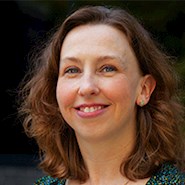
By Tara Hoke
The hypothetical situation presented in this column is an amalgam of several cases reported in the U.S. Environmental Protection Agency’s Environmental Crimes Case Bulletin. No ASCE members were identified in the actual cases used as the basis for this scenario.
Scenario
A small environmental engineering firm provides water sampling services for various wastewater treatment plants, coal mining operations, and industrial manufacturers in a mid-Atlantic state. As a condition of its environmental permit, each of the firm’s clients is required to conduct routine testing of water discharge produced by its operations. In addition, a client must submit reports to the state’s Department of Environmental Protection verifying that the tested discharge does not exceed pollutant limits imposed by state and federal law.
For nearly a decade, the water sampling business has provided a steady, if not exactly lucrative, source of revenue for the engineering firm, with the firm’s staff collecting samples and preparing the paperwork for its clients while outsourcing the actual testing to an outside laboratory. Recently, however, the firm has fallen on hard times. As profit margins dwindle, the engineering firm finds it increasingly difficult to keep up with the cost of doing business. With unpaid bills mounting, the firm’s outside laboratory announces it will no longer provide testing services to the firm, and the firm is unable to find another facility willing to perform the needed work.
Desperate to avoid exacerbating the firm’s problems with unmet commitments and unhappy clients, the firm’s principal directs a member of his staff to prepare the paperwork as if the testing had been completed, using data taken from reports submitted in previous years. At the engineer’s direction, the staff member submits nearly 100 falsified reports over a 10-month period. But the firm’s problems do not end with the fraudulent reports. Irregularities in the firm’s reporting of withheld payroll taxes draw scrutiny from the IRS, and the fraudulent reporting scheme is uncovered in the subsequent investigation.
Question
If the principal in this case had been an ASCE member, would his conduct have violated the ASCE Code of Ethics?
Discussion
When the Task Committee on the Code of Ethics embarked on its effort to develop the new ASCE Code of Ethics, it began by compiling a list of the moral principles that the committee felt were most critical to the practice of engineering. As this list took shape, it became apparent that nearly all the principles defined in the existing code — competence, truthfulness, integrity, to name a few — were still highly relevant to today’s engineering practice. Chief among these essential principles was the engineer’s duty to the public.
For more than 40 years prior to the committee’s work, ASCE’s Fundamental Canon 1 had directed engineers to “hold paramount the safety, health, and welfare of the public.” While the committee agreed wholeheartedly with the placement and priority of this first ethical principle, the members felt that revisions to the wording itself were necessary to meet with their goal of a more concise and modern ethical code. The committee deemed that the language of the old Canon 1 had become dated and that the expression “hold paramount” was a turn of phrase most engineers were unlikely to use or encounter outside the code.
In addition, the directive to hold the public paramount seemed to be placing its focus on the engineer’s state of mind, and the committee held that the new code would benefit from a more action-centric expression of this ethical obligation.
Yet the effort of modernizing the old Canon 1 was not without its challenges. In its first draft of the new code, the committee proposed as its new Section 1a a statement that engineers “first and foremost, advance the safety and health of the public.” Not surprisingly, given its importance among the ethical canons, this new language drew substantial commentary when presented to ASCE’s membership and volunteer leaders for feedback.
Some reviewers applauded the draft code’s mandate to advance public health and safety, finding that it set an aspirational tone to the new code and challenged engineers to do more with their professional knowledge and expertise than merely maintain the status quo. Others were more critical, calling the new phrasing imprecise, ambiguous, and even “mealy-mouthed.”
Some commenters opined that the new language rendered this principle unenforceable, as it was impossible to measure an engineer’s success or failure in advancing public health and safety. While a few argued in support of restoring the old “hold paramount” language, others put forward alternate suggestions, finding that a requirement to protect or even ensure public health and safety was more befitting as an ethical mandate.
After deliberating on the comments received, the committee ultimately agreed that protecting the public should stand as an engineer’s highest and most fundamental ethical obligation. The members noted that the aspirational preamble to the code already expressed the goal of advancing public health and safety through the practice of engineering.
Furthermore, the committee believed that other provisions in the code amply conveyed this more aspirational goal of advancing the public interest, such as the language on sustainability, inclusivity, and civic service.
The committee also aligned with the many reviewers who objected to the removal of the word “welfare” from the old canon’s “safety, health, and welfare,” noting that an engineer’s duty also encompasses consideration of critical individual or communal benefits that are not directly related to health or safety. Accordingly, Section 1a as ultimately put forward by the committee and incorporated in today’s code reads: “Engineers first and foremost, protect the health, safety, and welfare of the public.”
As applied to the scenario presented in this column, the engineer’s decision to falsify water testing results might easily have delayed or precluded detection of pollutants that could contaminate local drinking water, threaten aquatic life, or pose a number of other potential harms. As such, if this had involved an ASCE member, it is all but certain that the Committee on Professional Conduct would find his actions in violation of his ethical obligation to protect the health, safety, and welfare of the public.
As his actions involved duping not only the agency who received the fraudulent reports but also the clients who paid for services they did not receive and were pulled unwittingly into noncompliance with environmental regulations, it can also be said that the engineer’s conduct ran afoul of Section 4a’s stricture to “act as faithful agents of their clients and employers with integrity and professionalism.”
Additionally, the engineer’s conduct would likely be deemed to fall short of Section 1d’s requirement to “have zero tolerance for bribery, fraud, and corruption” as well as Section 3a’s instruction to “uphold the honor, integrity, and dignity of the profession.”
Since the adoption of the new ASCE Code of Ethics, this column has often noted that today’s code differs from its predecessor mainly in structure and level of detail, not in substance and application. Despite the change in language, it is clear that the obligation to protect the public health, safety, and welfare remains paramount among an engineer’s ethical obligations.
Tara Hoke is ASCE's general counsel and a contributing editor to Civil Engineering.
This article first appeared in the September/October 2021 issue of Civil Engineering.



